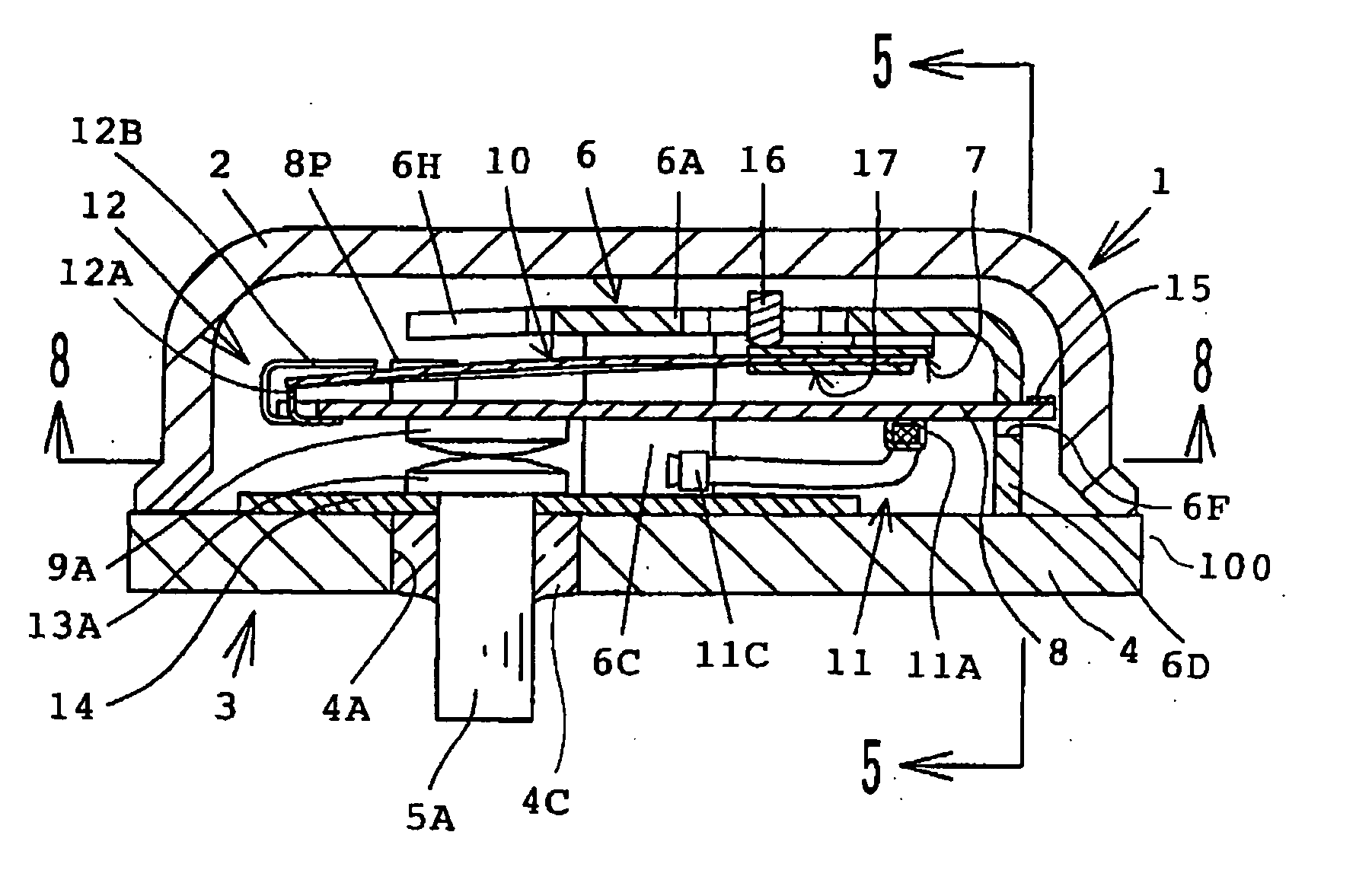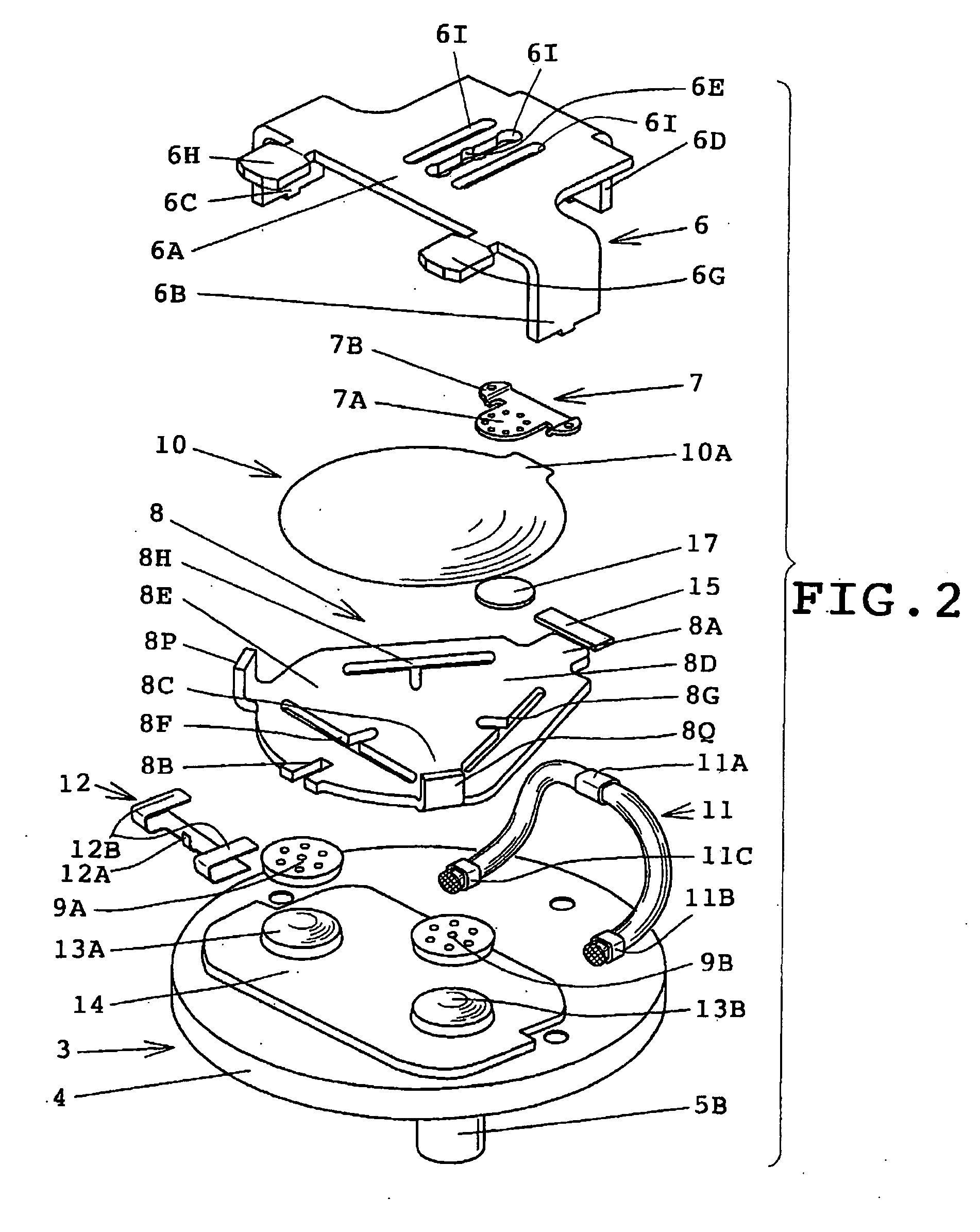Thermal protector
a technology of thermal protector and thermal shielding plate, which is applied in the direction of protective switch details, tumbler/rocker switches, relays, etc., can solve the problems of difficult stabilization of thermal protector performance, difficult heating of peripheral components, and non-economic numbers
- Summary
- Abstract
- Description
- Claims
- Application Information
AI Technical Summary
Benefits of technology
Problems solved by technology
Method used
Image
Examples
Embodiment Construction
[0023] The present invention will be described with reference to the accompanying drawings for more detailed description.
[0024] Firstly, a first embodiment of the invention will be described with reference to FIGS. 1 to 8. FIG. 1 is a longitudinal section of a three-phase internal protector as a thermal protector in accordance with the embodiment of the present invention. FIGS. 2 and 3 are exploded perspective views of the internal protector, showing components of the internal protector. FIG. 4 is a longitudinal section of the internal protector in its operation. FIGS. 5 to 7 are side views of the internal protector with a housing and the heating resistor being eliminated in order that the movement of the heating resistor may be explained. FIG. 8 a cross section taken along line 8-8 in FIG. 1.
[0025] As shown in FIG. 1, the internal protector 1 in accordance with the embodiment has a hermetic container 100 (corresponding to a casing) including a circular dome housing 2 made of a me...
PUM
 Login to View More
Login to View More Abstract
Description
Claims
Application Information
 Login to View More
Login to View More - R&D
- Intellectual Property
- Life Sciences
- Materials
- Tech Scout
- Unparalleled Data Quality
- Higher Quality Content
- 60% Fewer Hallucinations
Browse by: Latest US Patents, China's latest patents, Technical Efficacy Thesaurus, Application Domain, Technology Topic, Popular Technical Reports.
© 2025 PatSnap. All rights reserved.Legal|Privacy policy|Modern Slavery Act Transparency Statement|Sitemap|About US| Contact US: help@patsnap.com



